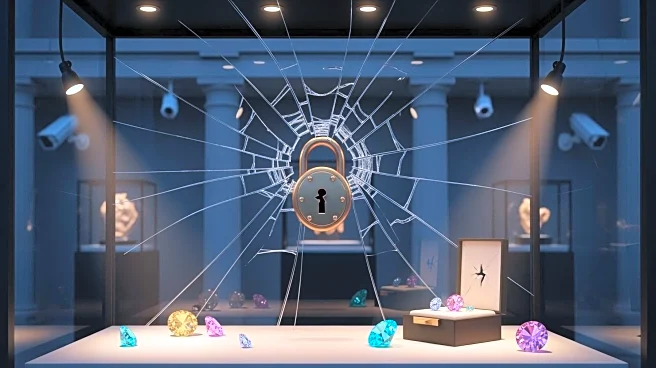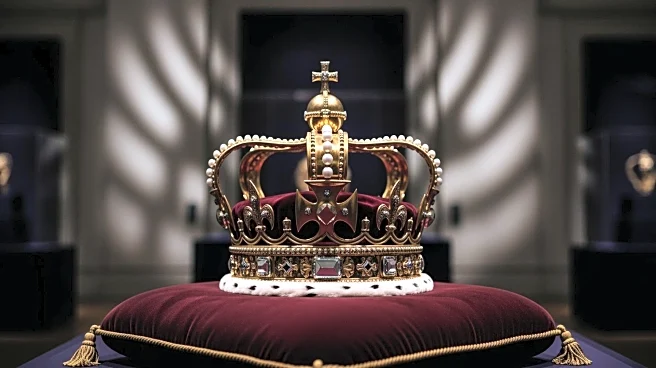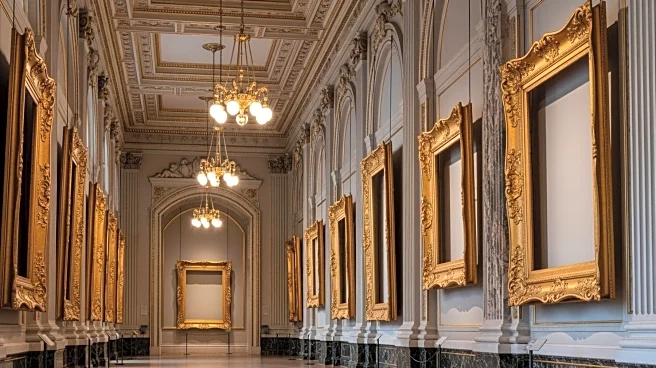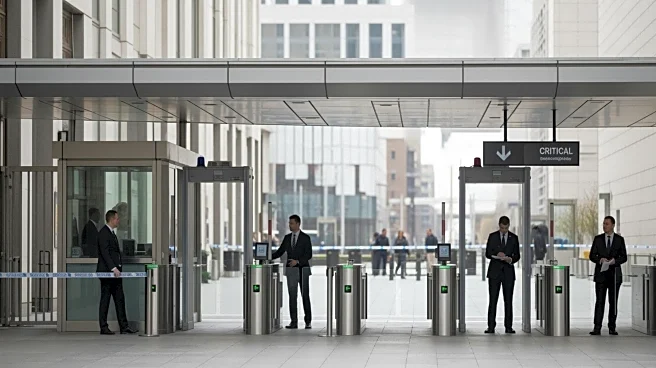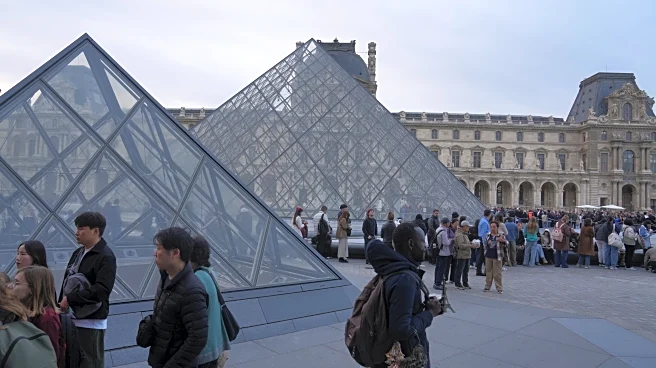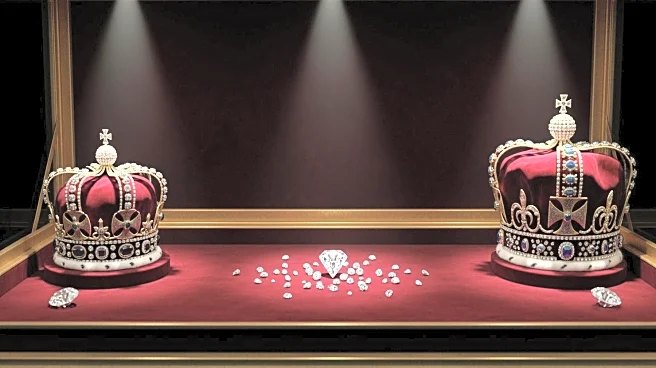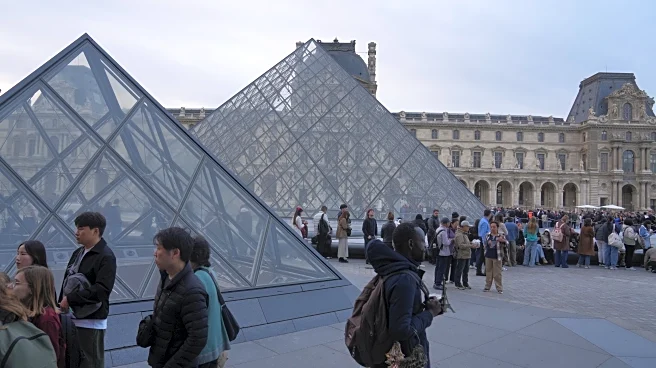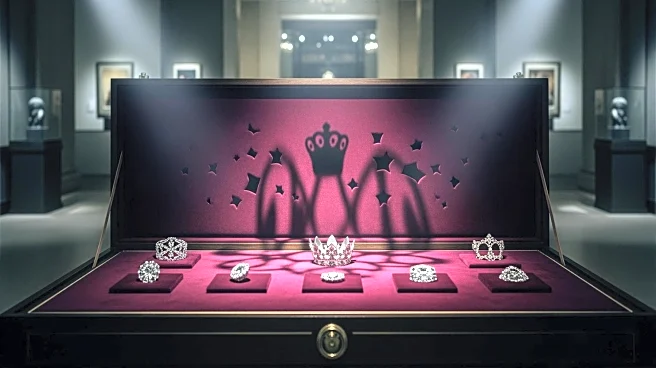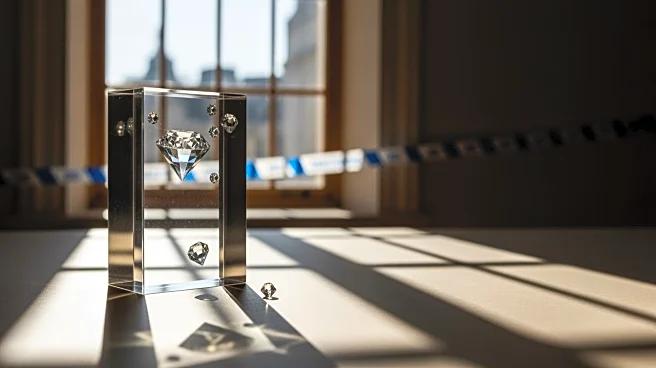What's Happening?
The Louvre Museum in Paris experienced a daring theft on October 19, where crown jewels valued at $102 million were stolen in an eight-minute heist. Four suspects used a mechanical ladder to access the Gallery
of Apollo, cut through a window, and threatened guards to evacuate the rooms. They broke into display cases containing France's crown jewels and escaped on scooters, leaving behind a motorcycle helmet and failing to set fire to their entry vehicle. The stolen items include a sapphire diadem, pearl tiara, diamond bow brooch, emerald necklace, and a reliquary brooch, all with significant historical value.
Why It's Important?
The theft represents a significant loss to France's cultural heritage, as highlighted by French President Emmanuel Macron. The stolen jewels are not only valuable but also hold historical significance, having belonged to figures such as Queen Marie-Amélie and Empress Eugénie. The incident raises concerns about security measures in museums and the protection of cultural artifacts. The loss impacts the museum's ability to showcase these historical pieces, affecting cultural education and tourism.
What's Next?
Authorities are likely to intensify efforts to recover the stolen jewels and apprehend the suspects. The Louvre may review and enhance its security protocols to prevent future incidents. The theft could prompt discussions on international cooperation to protect cultural heritage and improve security in museums worldwide. The museum's reputation and visitor confidence may be affected, necessitating strategic communication and restoration efforts.
Beyond the Headlines
The heist underscores the vulnerability of cultural institutions to organized crime and the challenges in safeguarding historical artifacts. It may lead to increased investment in security technology and collaboration among museums globally. The event highlights the ethical responsibility of preserving cultural heritage and the potential legal implications for those involved in trafficking stolen artifacts.
